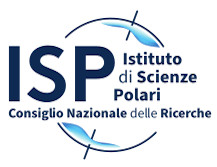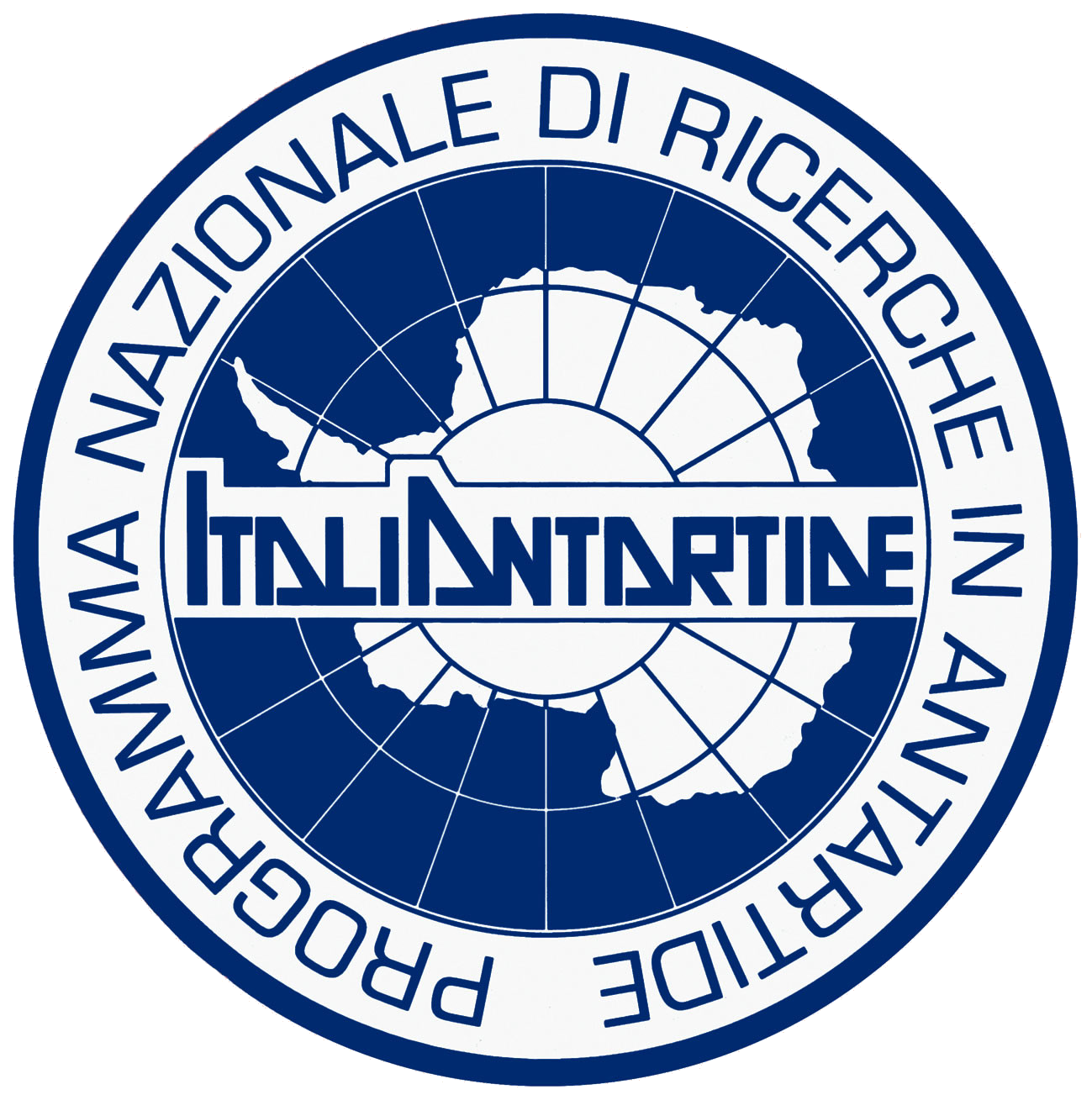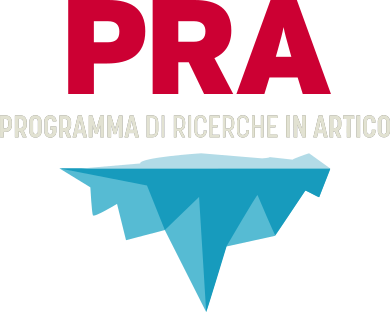English_content
Most of the scientific activity of the researchers of the Institute of Polar Sciences makes use of three permanent scientific bases located in the polar areas: the Dirigible Italia Station (SDI) located at the Svalbard Archipelago, in the Arctic and the Mario Zucchelli (MZS) and Concordia stations in Antarctica, respectively in the Terranova Bay and at Dome C, on the Antarctic Plateau.
The Dirigible Italia Station is managed by the CNR through ISP. The Mario Zucchelli Station is managed by ENEA for PNRA, while the Concordia base, opened on the basis of a bilateral Italian-French agreement between PNRA (Italy) and IPEV (France), is managed jointly between ENEA and IPEV.
Research Topics
Introduction
The ISP’s research activities are mainly carried out in the Antarctic and Arctic Regions where snow and ice are the dominant aspects of the landscape. These regions, more than others, are affected by climate change and because of this the work of scientists has become a real race against time to be able to learn more about the history of our planet in order to understand how human activities, from the dawn of civilization to present day, have impacted ecosystems, by interacting with and modifying the delicate balances that govern the Earth’s climate system.
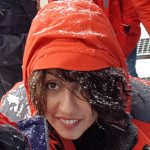 She obtained the Ph.D title in Environmental Sciences in 2013 from the University of Messina and spent six years as postdoctoral researcher at the University of Messina, Department CHIBIOFARAM. Since 2019, she is Researcher at the Stazione Zoologica Anton Dohrn, Department of Marine Biotechnology. Research activities are mainly focused on microbial ecology, specifically focused on prokaryotic diversity, bacterial bioprospecting for the research of marine natural products to be applied in the biomedical and environmental field (in temperate and polar habitats). Particular interest is paid to the association of bacteria with filter-feeding organisms and mainly oriented to the study of bioactive molecules. She has improved her laboratory skills during several stays in foreign institutions, i.e. Karlsruhe Institute of Biotechnology (Germany), and Centro de Ciências do Mar Universidade do Algarve (Portugal).
She obtained the Ph.D title in Environmental Sciences in 2013 from the University of Messina and spent six years as postdoctoral researcher at the University of Messina, Department CHIBIOFARAM. Since 2019, she is Researcher at the Stazione Zoologica Anton Dohrn, Department of Marine Biotechnology. Research activities are mainly focused on microbial ecology, specifically focused on prokaryotic diversity, bacterial bioprospecting for the research of marine natural products to be applied in the biomedical and environmental field (in temperate and polar habitats). Particular interest is paid to the association of bacteria with filter-feeding organisms and mainly oriented to the study of bioactive molecules. She has improved her laboratory skills during several stays in foreign institutions, i.e. Karlsruhe Institute of Biotechnology (Germany), and Centro de Ciências do Mar Universidade do Algarve (Portugal).
She participated to oceanographic cruises in the Mediterranean Sea and to the 34th Antarctic Campaign at the Italian Research Station Mario Zucchelli. She has competence in drafting experimental designs, formulation of research aims and profiling of plans for data collection and analysis, interpretation and presentation of statistical findings, biostatistical analyses. She attended specialized courses on microbial metagenome analysis, cultivation and new-generation molecular methods, liquid chromatography and mass spectrometry methods.
To date, she is involved in research projects on polar topics (Arctic and Antarctic microbiology). She is Topic Editorial Board Member of the open-access journals Environments, and is author or co-author of more than thirty papers in peer-reviewed journals (h-index 10, 284 citations).
Scopus - Author ID: 55619021900
Secondary ISP site in Rome-Montelibretti
Where we are
The secondary site of the Institute of Polar Sciences of Rome - Montelibretti is located at the Rome 1 CNR-Research Area, Provincial Road 35d, km 0.700, 00010 Montelibretti (RM). The ISP staff, working in the Montelibretti Area, have 252 m2 of space (including offices and laboratories) which is distributed between 2 buildings, partly shared with the staff of IRSA (Water Research Institute) and IIA (Institute of Atmospheric Pollution research). Map
How to get here:
- by train: railway line FR1 (Fiumicino-Fara Sabina), get off at the "Pianabella di Montelibretti" stop and proceed for 200 m on foot to the Rome 1 CNR-Research Area.
- by car: the Institute can be reached by car with the possibility of temporary parking within the CNR-Research Area.
- by plane: from Fiumicino airport, take the FR1 railway line (Fiumicino-Fara Sabina), get off at the "Pianabella di Montelibretti" stop and proceed for 200 meters on foot to the Rome 1 CNR-Research Area.
Contact
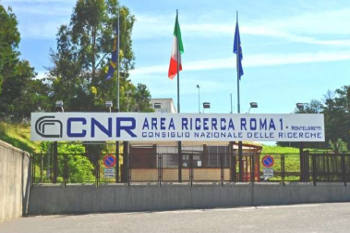 ISP Secondary office of Roma
ISP Secondary office of Roma
Responsable
Dr. Luisa Patrolecco
E-mail: responsabile_rm AT isp.cnr.it
CNR Area della Ricerca di Roma 1
Via Salaria km 29,300 - 00015 Montelibretti (RM)
Phone:+39 06-90672797
Fax: +39 06-90672787
Where we are
The secondary site of Rome – Tor Vergata is located in the Research Area of Tor Vergata in via Fosso del Cavaliere 100 inside the Campus of the Tor Vergata University of Rome, near to Castelli Romani. This Research Area hosts different research and scientific Institutions such as ENEA, INFN, ASI and ESA. The ISP staff have a defined working area in building L (ex ISAC) and shares space with ISAC staff and have access to other Research Area services such as laboratories, the warehouse, workshops, and network services. The ISP staff can also make use of the infrastructure for laboratory and field experimental activities. Map
How to get here:
- by plane: from Fiumicino Airport take the Leonardo Express train (every 30 minutes) to Roma Termini. From Rome Termini, take Metro A, get off at Anagnina (terminus) and take bus 509 (every 30 minutes) to the terminus (CNR research area);
- by train: from Rome Termini, take Metro A, get off at Anagnina (terminus) and take bus 509 (every 30 minutes) to the terminus (CNR research area);
- by car: the area can be reached by car from the GRA Romanina - Torrenova exit, from the A1 exit Monteporzio Catone or Roma Sud exit, from Tuscolana or via di Passo Lombardo.
Contact
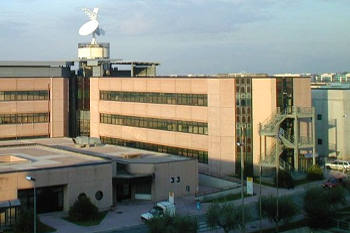 ISP Secondary office of Roma – Tor Vergata
ISP Secondary office of Roma – Tor Vergata
Secondary site without administrative duties
Responsable
Dr. Luisa Patrolecco
CNR - Area di Ricerca di Roma 2 – Tor Vergata
Via Fosso del Cavaliere, 100
00133 ROMA
Phone:+39 +39 06 45488-349
+39 06 45488-629
 Master’s degree in Environmental Sciences with a specialization in Global Change & Sustainability at Ca' Foscari University of Venezia. The thesis focused on studying the distribution of anionic bromine and iodine compounds in polar snow samples from the Svalbard islands, examining their seasonal variability and the impacts of climate change. Participation in a scientific publication titled Inorganic iodine and bromine speciation in Arctic snow at picogram-per-gram levels by IC-ICP-MS, published in the Journal of Analytical Science and Technology. Currently, she is a research fellow at the CNR-ISP, where she is conducting research on mercury and other micro-contaminants and chemical markers in air and atmospheric aerosol at the high mountain site Col Margherita, within the scope of the research project DECIPHER - Disentangling mechanisms controlling atmospheric transport and mixing processes over mountain areas at different space-and timescales.
Master’s degree in Environmental Sciences with a specialization in Global Change & Sustainability at Ca' Foscari University of Venezia. The thesis focused on studying the distribution of anionic bromine and iodine compounds in polar snow samples from the Svalbard islands, examining their seasonal variability and the impacts of climate change. Participation in a scientific publication titled Inorganic iodine and bromine speciation in Arctic snow at picogram-per-gram levels by IC-ICP-MS, published in the Journal of Analytical Science and Technology. Currently, she is a research fellow at the CNR-ISP, where she is conducting research on mercury and other micro-contaminants and chemical markers in air and atmospheric aerosol at the high mountain site Col Margherita, within the scope of the research project DECIPHER - Disentangling mechanisms controlling atmospheric transport and mixing processes over mountain areas at different space-and timescales.
 PhD in Environmental Sciences from the Ca’ Foscari University of Venice, with a thesis on the assessment of Small Microplastics (<100 µm) fluxes and other pollutants from the atmospheric compartment to highways stormwaters run-off. Research fellow (2019-2020) at Ca’ Foscari University with a research project in the development and analysis of microplastics (<100 µm) and plastic additives via MicroFTIR and PyrGC/MS in different environmental matrices, such as water, sediment, biota, snow, aerosol and ice cores also from Svalbard Islands. Winner of an Arctic Field Grant 2020 on the quantification and identification of small microplastics, additives, and plasticizers in snow and aerosol from Ny-Ålesund, Svalbard Island.
PhD in Environmental Sciences from the Ca’ Foscari University of Venice, with a thesis on the assessment of Small Microplastics (<100 µm) fluxes and other pollutants from the atmospheric compartment to highways stormwaters run-off. Research fellow (2019-2020) at Ca’ Foscari University with a research project in the development and analysis of microplastics (<100 µm) and plastic additives via MicroFTIR and PyrGC/MS in different environmental matrices, such as water, sediment, biota, snow, aerosol and ice cores also from Svalbard Islands. Winner of an Arctic Field Grant 2020 on the quantification and identification of small microplastics, additives, and plasticizers in snow and aerosol from Ny-Ålesund, Svalbard Island.
Current position: Research Fellow at CNR-ISP on the microplastics and plastic additives analysis and environmental impact assessment in different polar matrices.
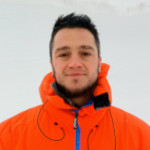 Biochemist graduated from the National University of Mar del Plata (Argentina), PhD in Biology from the National University of Comahue (Argentina), with a specialization in the field of water quality. Wintering scientist at the Carlini Antarctic Base, Argentina (25 de Mayo Island, Antarctica, 2023-2024). Professor of general chemistry and biological chemistry for Environmental Engineering at the University of Rio Negro (Argentina, 2017-2022).
Biochemist graduated from the National University of Mar del Plata (Argentina), PhD in Biology from the National University of Comahue (Argentina), with a specialization in the field of water quality. Wintering scientist at the Carlini Antarctic Base, Argentina (25 de Mayo Island, Antarctica, 2023-2024). Professor of general chemistry and biological chemistry for Environmental Engineering at the University of Rio Negro (Argentina, 2017-2022).
Current position: Research Fellow at the Bologna branch of the Institute of Polar Sciences and at the CNR Arctic Base Dirigibile Italia (Ny-Ålesund, Svalbard Islands), for the topic Monitoring of atmospheric, glaciological and marine parameters in the Arctic.
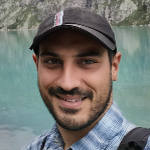 He obtained in 2016 his Master’s degree in Applied Earth Sciences at the University of Turin. In 2021, he obtained his PhD at the University of Hamburg (Germany) in the Department of Earth Sciences. For his doctoral project, he investigated the paleoclimate and paleoenvironmental conditions in the Mediterranean area about 6 million years ago, when the Mediterranean Basin became almost completely isolated from the global ocean. To carry out his research, he mostly uses fossil molecules preserved in marine sedimentary rocks that can be assigned to a biological source in the environment, i.e. lipid biomarkers.
He obtained in 2016 his Master’s degree in Applied Earth Sciences at the University of Turin. In 2021, he obtained his PhD at the University of Hamburg (Germany) in the Department of Earth Sciences. For his doctoral project, he investigated the paleoclimate and paleoenvironmental conditions in the Mediterranean area about 6 million years ago, when the Mediterranean Basin became almost completely isolated from the global ocean. To carry out his research, he mostly uses fossil molecules preserved in marine sedimentary rocks that can be assigned to a biological source in the environment, i.e. lipid biomarkers.
Currently, he is a research fellow at the Institute of Polar Sciences of the CNR carrying out his research at the Aldo Pontremoli join-lab of Lecce and in Bologna. His research deals with the use of lipid biomarkers to reconstruct the effects of permafrost thawing on the Arctic Ocean.
More...
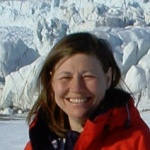 Graduated in Geological Sciences (1981), obtained her PhD in Earth Sciences (1987) at the University of Rome La Sapienza. She started her scientific activity at CNR during her PhD and in 2001 become senior researcher at CNR-IIA. In 2019, she joined the CNR-Institute of Polar Science. She is Adjunct Professor in Remote Sensing and GIS at the Dept. of Ecobiology (University of Roma Sapienza) since 2011.
Graduated in Geological Sciences (1981), obtained her PhD in Earth Sciences (1987) at the University of Rome La Sapienza. She started her scientific activity at CNR during her PhD and in 2001 become senior researcher at CNR-IIA. In 2019, she joined the CNR-Institute of Polar Science. She is Adjunct Professor in Remote Sensing and GIS at the Dept. of Ecobiology (University of Roma Sapienza) since 2011.
Scientific interests: environmental studies, at local and global scale, in Polar and Mediterranean areas using multi-sensor and multi-platform remote sensing images; geostatistical analysis of environmental data and thematic cartography in GIS environment.
Her research activity is focused on the study of the spectroradiometric properties of natural surfaces (from Visible to Thermal Infrared range) aimed to the interpretation and analysis of products deriving from Earth Observation.
Since 1997, she was involved in field surveys in Polar Regions (Antarctica and Arctic) to study the radiometric properties of snow and ice, and the interactions at snow/air/soil interface.
People CNR
 CNR scientist at the Institute of Polar Sciences, headquarters of Venice-Mestre.
CNR scientist at the Institute of Polar Sciences, headquarters of Venice-Mestre.
From 1996 to 2018 at the Center for Biology and Control of Weeds, since 2002 Institute of Agro-Environmental and Forest Biology (IBAF) and since September 2018 Institute of Research on Terrestrial Ecosystems (IRET) of Legnaro, Padua.
Graduated in Agricultural Sciences in 1992.
CNR macro areas of reference: Earth and Environment, Agri-food
Research interests
• Ecophysiology of weeds
• Modeling of the competition between weeds and crops and of light interception within canopies
• Environmental fate of herbicides Summary of activities and assignments:
From 2008 to 2016 responsible for the IBAF URT: Mountain ecosystems for the mitigation of environmental changes in the alpine area at the Alpine Studies Center of the University of Tuscia in Cinte Tesino (TN).
Member of the Management Committee of the COST Action E 47 (2005-2009): "European Network for Forest Vegetation Management: Towards Environmental Sustainability" del domain: Forests, their Products and Services.
Referee for the journals: Applied Ecology, Weed Research, Int. J. of Biodiversity and Conservation, Spanish Journal of Agricultural Research, Journal of Testing and Evaluation.
Experiences abroad:
In 1995 and 1997 he spent two periods abroad at the WUR (Wageningen University and Research, the Netherlands) for a total of 6 months.
In 2002 he was visiting scientist for about 4 months at the Department of Botany and Plant Sciences, University of California, Riverside, CA, USA.
In 2008 he was visiting scientist for two months at the Plant and Invertebrate Ecology Department, Rothamsted Research, UK.
Scopus - Author ID: 6507412824
 Researcher at Institute of Polar Sciences-CNR (CNR-ISP), Venice, Italy. Master graduated in Environmental Sciences in 2011 at Ca’ Foscari University, she obtained the PhD in Environmental Sciences in 2015 at the same University. She was Research fellow at the Department of Environmental Science, Informatics and Statistics of Ca’ Foscari University from 2015 to 2021. Among her main research interests are untargeted metabolomics, applied to the study of plants and environmental matrices, emerging contaminant analysis, the development of analytical methods for the determination of organic compounds with HPLC-HRMS techniques. She participated to national research projects (PNRA, PRIN); she is author of 10 publications on international journals with more than 190 citations (h index=7).
Researcher at Institute of Polar Sciences-CNR (CNR-ISP), Venice, Italy. Master graduated in Environmental Sciences in 2011 at Ca’ Foscari University, she obtained the PhD in Environmental Sciences in 2015 at the same University. She was Research fellow at the Department of Environmental Science, Informatics and Statistics of Ca’ Foscari University from 2015 to 2021. Among her main research interests are untargeted metabolomics, applied to the study of plants and environmental matrices, emerging contaminant analysis, the development of analytical methods for the determination of organic compounds with HPLC-HRMS techniques. She participated to national research projects (PNRA, PRIN); she is author of 10 publications on international journals with more than 190 citations (h index=7).
Scopus - Author ID: 55480654200 ![]() https://orcid.org/0000-0001-7092-5963 ResearcherID: K-6496-2016
https://orcid.org/0000-0001-7092-5963 ResearcherID: K-6496-2016
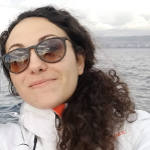 Researcher at the Institute of Polar Sciences (CNR-ISP) since December 2021. MSc. in Biology and Ecology of the Coastal Marine Environment (2012) and PhD in Environmental Sciences: Marine Environment and Resources (2016) at the University of Messina. Her main research fields include marine bioacoustics ecology, distribution, and impact of anthropogenic noise on marine mammals, with a focus on new applications and IT tools for the automated analysis of large datasets from acoustic sensors and integrated underwater systems.
Researcher at the Institute of Polar Sciences (CNR-ISP) since December 2021. MSc. in Biology and Ecology of the Coastal Marine Environment (2012) and PhD in Environmental Sciences: Marine Environment and Resources (2016) at the University of Messina. Her main research fields include marine bioacoustics ecology, distribution, and impact of anthropogenic noise on marine mammals, with a focus on new applications and IT tools for the automated analysis of large datasets from acoustic sensors and integrated underwater systems.
From 2012 to 2018 she participated in various national and international research projects, as a student, doctoral student and as an associate in the research activities of the Institute of Nuclear Physics - LNS of Catania: KM3NeT international collaboration, SMO (FIRB-2008) and EMSO European Research Infrastructure. She conducted a research stay at the Ocean Acoustics Lab of the AWI Institute of Bremerhaven (Germany) in 2015. She was a member of the.
She collaborated on the National Marine Strategy II project, first on behalf of CoNISMa (2017), then as a research fellow at IAMC-CNR (2017-2018). She is founding member of the nonprofit organization eConscience- Art of Soundscape for research and scientific dissemination. She took part in several scientific expeditions at sea. She is co-author of about 20 international publications on ISI scientific journals and over 30 publications among national scientific journals, proceedings, books, and technical reports. She presented and co-authored over 30 presentations at national and international conferences. She is Principal Investigator of the project PRIN PNRR 2022 – KNOWhale - KNOwledge improvement for the conservation of endangered Mediterranean fin Whale in Southern Italy and Research Unit Leader of the project PRIN 2022 – Deep-sea Investigation with a View to protect Elusive cetacean Species (DIVES).
![]() https://orcid.org/0000-0002-7711-1249
Scopus - Author ID: 56427768600
https://orcid.org/0000-0002-7711-1249
Scopus - Author ID: 56427768600
 Ministero dell'Universita e Ricerca
Ministero dell'Universita e Ricerca
Programma Ricerche Artico
Programma Nazionale di Ricerca in Antartide
 Ministero degli Affari Esteri e della Cooperazione Internazionale
Ministero degli Affari Esteri e della Cooperazione Internazionale
L'Italia e l’Artico
L’Italia e l’Antartide
CNR-ISP
National Research Council
Institute of Polar Sciences
c/o Scientific Campus - Ca' Foscari University Venice - Via Torino, 155 - 30172 VENEZIA MESTRE (VE)
Phone: +39 041 2348547 - E-mail: protocollo.isp AT pec.cnr.it
Fax: +39 041 2348 549 - Codice Fiscale: 80054330586 - P.I.:02118311006
Unless otherwise indicated, the content of this site is licensed : Attribution Non Commercial Share Alike 4.0 International (CC BY-NC-SA 4.0)
Privacy policy e Cookie policy - Transparent administration (CNR)
